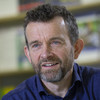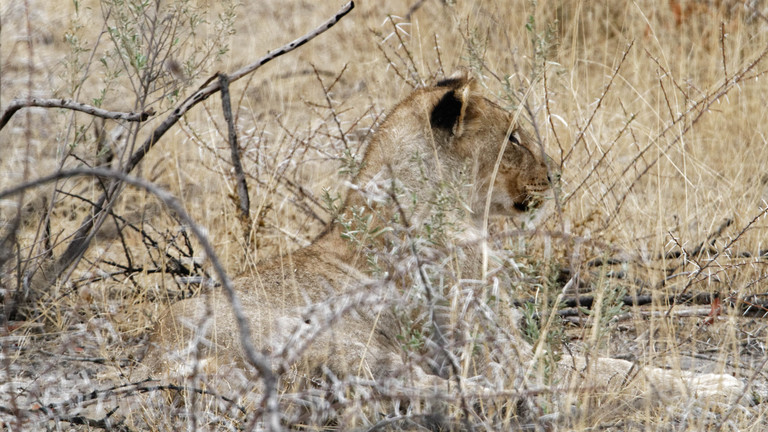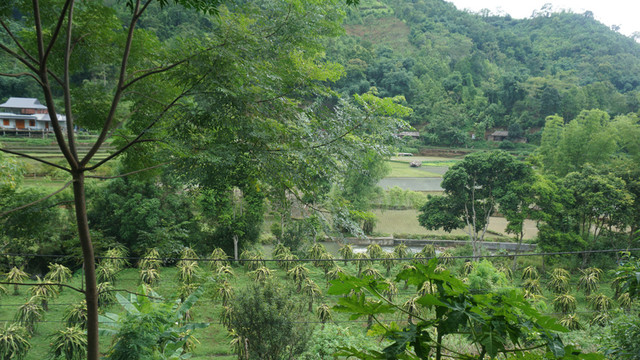There’s justice in the battle for biodiversity
Increasingly recognised as the irreplaceable basis of our natural world, biodiversity is also fundamental to human wellbeing and sustainable development. James Mayers looks at why effective conservation action is inextricably linked with development and social justice.


Recovering wildlife populations in Namibia are largely attributed to policies that give local people rights to benefit from wildlife on their land (Photo: Ronald Woan, Creative Commons via Flickr)
Human activity has irrefutably hammered our natural world. Recent reports from the Intergovernmental Science-Policy Platform on Biodiversity and Ecosystem Services paint a stark picture of decline.
By 2050, we are expected to have destroyed up to 46% of all biodiversity. Around 12 million hectares are lost each year to land degradation, costing more than 10% of annual global GDP in lost ecosystem services. The human cost can also be counted: land degradation harms the wellbeing of at least 3.2 billion people.
Despite the stakes, biodiversity initiatives are failing. Since the 1970s, there has been a 660% increase in protected area coverage, but a 60% decline in most if not all major animal groups.
Moving with the times
We need effective solutions: biodiversity underpins all the Sustainable Development Goals. To find them, all actors must keep up with a fast-moving world.
Trends in migration, climate change, urbanisation, population growth, investment, technology and labour all re-cast the connections between land and ecosystem degradation, and between restoration and social, economic and political processes. Policymakers need to recognise and plan anew around social and environmental changes, particularly in some of the poorest parts of the world.
This means laudable ambitions to preserve iconic animals must see each species – including people – as an interdependent part of the living landscape. Conservation plans can and should include local people as biodiversity allies, if the incentives are right. In Namibia, wildlife recoveries are largely attributed to giving private farmers and local communities rights to benefit from wildlife on their land, a motivation to safeguard animals that has helped national wildlife numbers grow six-fold.
More funding is always welcome but, to make a dent in the ecological damage, investments must deliver broader development benefits. And that requires recognition of the interconnectedness of biodiversity, human wellbeing and sustainable development.
Biodiversity is a human issue
Moreover, it is a poverty and a gender issue.
Biodiversity loss disproportionately affects the world’s poorest countries and people, whose livelihoods often rely on natural resources or foraging. In India, ecosystem services accounted for 16% of overall GDP in 2010 – but for 47% of GDP of the poor.
Women have little decision-making power over natural resources in many countries. Yet much analysis shows that giving women agency over land and natural resources can create the crucial momentum for local development and wise resource use.
The response to poverty and marginalisation must be inclusive decision-making. Our research contradicts the narrative that protecting biodiversity must be bad for people. No one will be more affected by biodiversity loss than the poorest: we must include their wellbeing if we are to design fair and effective responses.
Biodiversity is a social justice issue
Effective courses of action are as much about disempowering environment exploiters as empowering its potential local stewards.
Bluntly put, finance must flow from rich to poor countries if we are to protect biodiversity. This is a question of social justice: the global stock of biodiversity is predominantly in poor countries because wealthy nations used theirs up. Everyone now depends on what is left as a global public good, to sequester carbon, offer genetic stocks for developing medicine and a thousand other needs.
Given this, aid targeted towards biodiversity must take an inclusive approach, also seeking wins for poverty and equity in poorer nations. A protected area becomes a human rights abuse if local people are forced from it.
CBD Aichi Target 11 calls for conservation sites to be managed equitably. Any investment in conservation should be in line with that principle, as well as being guided by and accountable to local people.
While we are still fighting to escape the idea that the interests of animals, people and biodiversity are separate, the good news is that we know that well-targeted aid for local wildlife stewardship really works.
Locally-led action for global gains
When aid and development budgets are carefully accounted for, supporting community efforts to tackle ecosystem degradation offers an extremely cost-effective approach.
A practical agenda for restoring degraded ecosystems often simply starts with better information, which is vital to then improve communication and organisation. Well-targeted support can then help local people to secure tenure, and enable them to engage more effectively in the value chain which regenerated resources make possible.
One of the largest restoration successes in Africa (PDF) is the natural regeneration of Niger’s Maradi and Zinder regions, managed by local farmers after they were granted ownership of the land. Over 10 years, more than 5 million hectares have been regenerated with mixed vegetation, there is greater cereal production, and improved benefits have flowed to 2.5 million people.
Similarly, in China, small forest farmers were responsible for 70% of the 2.9 million hectares per year of reforestation between 2000 and 2010. This was made possible largely by favourable tenure changes, improvements in the use of forests as collateral for loans, the development of forest insurance, and support for farmers’ capacity to organise.
At IIED, we are further building the case and practical paths for biodiversity conservation that rests on local decision-making and ecosystem stewardship that includes sustainable benefits for the poorest people. Animals, people and plants are all part of biodiversity; it’s time we saw the solutions as interconnected too.


